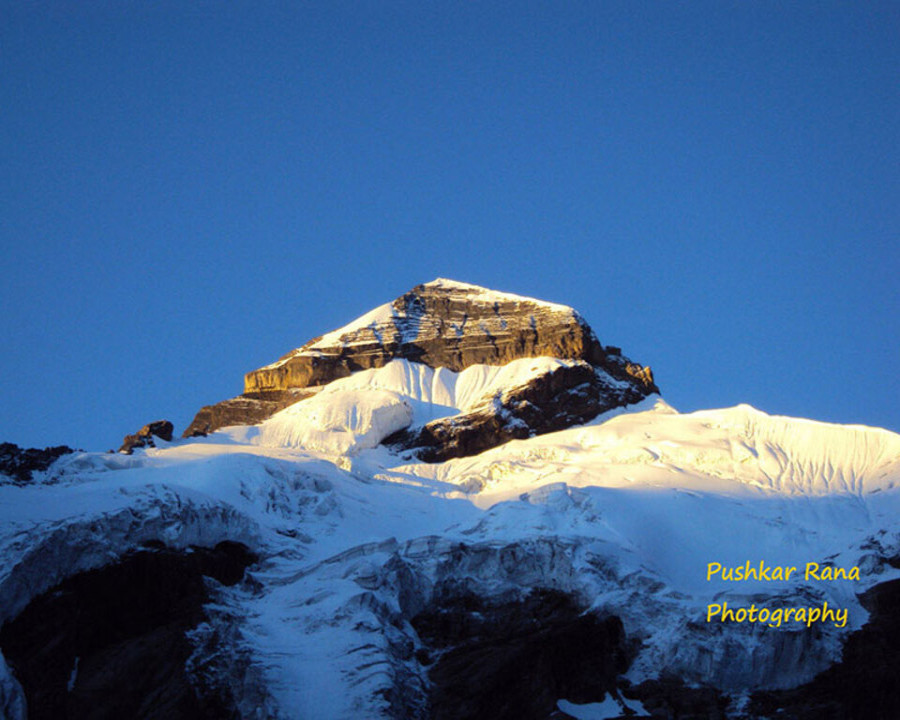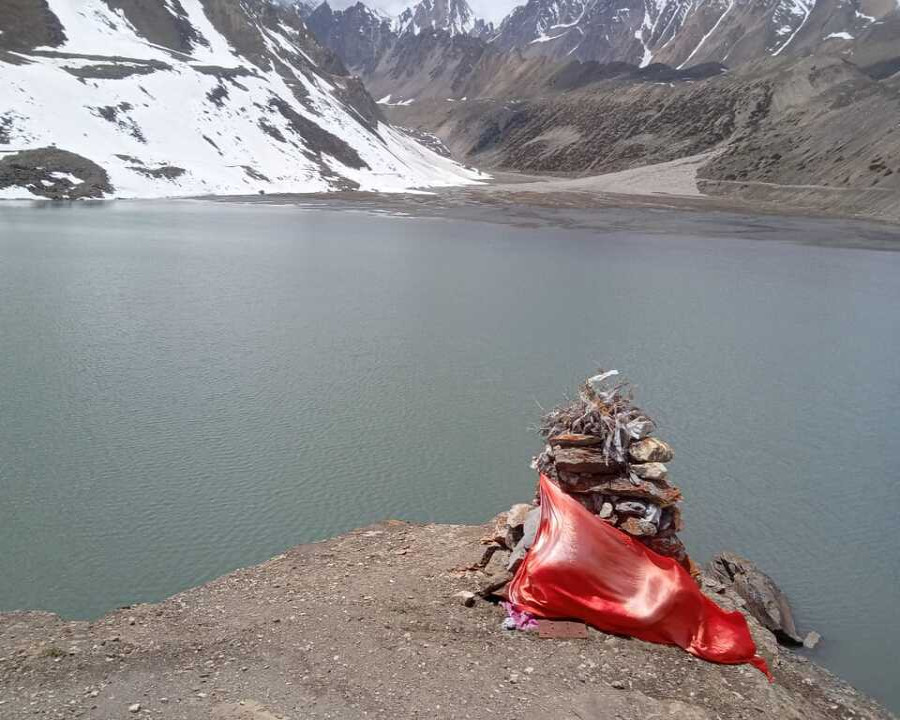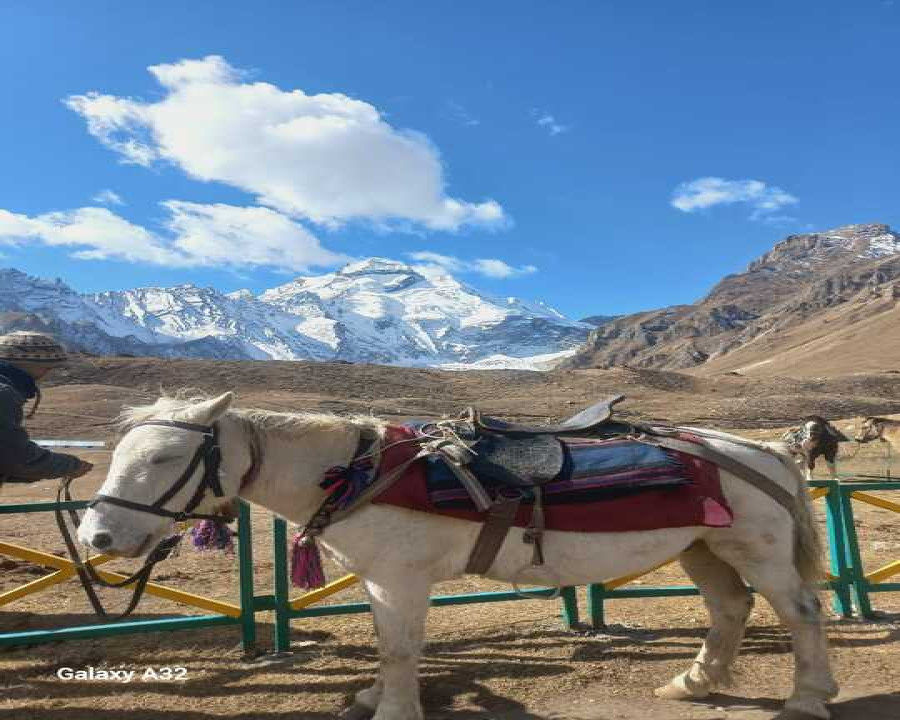


Adi Kailash Yatra – A Complete Guide to Yatra
Adi Kailash is a sacred mountain situated in the Kumaon region of Uttarakhand at the Indo-Tibet border and is a part of the Panch Kailash Mountains that are highly revered by the Hindu Pilgrims . Also known as Chhota Kailash and Baba Kailash, Adi Kailash is considered a replica of Mount Kailash, which is situated in Tibet and is the abode of Lord Shiva. So why, it is also considered an alternative to the Kailash Mansarovar Yatra, which is a pilgrimage to Mount Kailash and Lake Mansarovar in Tibet.
The Adi Kailash Mountain is loctaed at an altitude of 5945 m above the sea level, amidst snow covered mountains in a village called Kuti, which is the last Indian village at the Indo-Tibetan border. The region is popular for the breathtaking beauty and an unmatched spiritual importance, the Adi Kailash mountain is a must visit for the traveler, as well as, the devotee in you. This spiritual tour is an adventure in itself, taking you through beautiful landscapes and remote villages, while also allowing you to visit the en number temples and sacred sites along the way.
Adi Kailash Mountain
As enchanting and tempting as this trip may seem, it is also extremely challenging due the unpredictable nature of weather in the Himalayan region, low oxygen at high altitudes and difficult terrain. Thus, it is crucial to plan well in advance and to take all necessary cautions to ensure it is an enjoyable and smooth journey.
So for all the plans for a trip to Mount Adi Kailash, kone must understand the terrain and the weather conditions, ideal time to visit, suggested itinerary and how you can reach Adi Kailash Via Kathgodam/Haldwani
History and Significance of Adi kailash Yatra
Adi Kailash holds a place of prime importance within the Hindu & Buddhist Pilgrims for many reasons. Most important, it has massive resemblance to Mount Kailash in Tibet, the earthly abode of Lord Shiva, one of the most supreme God in Hinduism & Tranquil Meditation by Biuddhist Saints for Buddhism.
Second important points is that it is also one of the Panch Kailash — the five tall high Kailash peaks in the Himalayan range which hold religious significance. If we go by the order of most to least significant, Adi Kailash comes second in place, right after Mount Kailash, and is followed by Shikhar Kailash(Shrikhand Mahadev), Kinnaur Kailash and finally, Manimahesh Kailash.AlthoughMount Kailash is located in Tibet, Adi Kailash in Uttarakhand, the remaining three peaks are located in Himachal Pradesh.
As per the popular legend, Adi Kailash was where the procession of Shiva and Parvati’s wedding stopped before reaching Triyuginarayan for the finally ceremony. It is also the site where Lord Shiva meditated for thousands of years. Parvati, in order to prove her devotion to Shiva, undertook testing penance at Adi Kailash, including meditation, prayers and self-restraint. Thus, this sacred site holds a testament to the unbreakable bond between Lord Shiva and Goddess Parvati.
Adi Kailash is also a famous site because of the fact that here’s Lord Shiva would perform Tandava — a divine and vigorous dance that he would perform as the deity of destruction. Besides, it is believed that Ravana performed extreme penance at this site to please Lord Shiva, who then blessed upon him unparalleled strength and powers.
Om Parvat
While the pilgrims are on the Adi Kailash Yatra, they also visit another spiritually significant mountain peak called Om Parvat. The rich aura of this mountain lies in the fact that one can see the image of Aum (ॐ) because of the way white snow sits on top of the barren and dark mountain. On a clear and sunny day, it is a breathtaking view to capture in camera and eyes.
This is located in between the borders of India, Nepal and Tibet, the Om Parvat can be seen from Nabhidang camp on the Adi Kailash Yatra circuit.
** This is the route and way to Lipulekh border and enter into Tibet for Kailash Mansarovar.
Adi Kailash Yatra Route and Places to Visit
Usually, the Adi Kailash Yatra starts at either Kathgodam railway station or Pantnagar airport, from where you can reach Pithoragarh via cab, which takes about 6-7 hours. The appropriat route to go via Almora and Bhimtal, so that you can visit Neem Karoli Baba temple at Kainchi Dham on the way. You can also stop by at Golu Devta Temple and Jageshwar Dham before reaching Pithoragarh. Overnightnight stay at Pithoragarh and leave for Dharchula the next morning.
The day 2 start early from Pithoragarh for Dharchula which is a town in Uttarakhand situated at Nepal border. The river Kali separates the two counties, with India on one bank and Nepal, on the other. The location is 100 km drive that takes nearly 3 hours. After reaching Dharchula, our guide get all the matter coordinated for the Inner Line Permit i.e., Medical, Verification and other formalities for the enclosure which is required for the rest of the journey since you’ll be going to the restricted areas including areas near Nepal and Tibet borders.
Further on the 3rd Day , you leave for Gunji, which is just about 70 km away from Dharchula, however, due to tough terrain and difficult roads, it easily takes 6-7 hours. This testing, yet adventurous journey is a scenic drive along river Kali, and takes you through remote and untouched villages.
Day 4 is actually when the trip starts to get interesting! It is finally time to start from Gunji to Jolingkong, which is the base for the Adi Kailash trek. From here, you can trek on foot and explore Gauri Kund, Parvati Sarovar and witness the stunning beauty of Mount Adi Kailash. Also Visit the temple at Parvati Sarovar and Bheem Ki Kheti which is just 1.5 km away. After spending a few hours soaking in the divinity of this place, you return to Gunji.
Therafter we further make a trip to Om Parvat, which is also an integral part of the Adi Kailash Yatra. From Gunji, you travel to Nabhidang via Kalapani, where you can get down to visit the Maa Kali Temple. Once you reach Nabhidhang, alittle trek to the viewpoint of Om Parvat. After this, you can either return to Gunji or stay the night in Nabi village.
On day 6, you return to Dharchula and stay the night before leaving for Kathgodam or Pantnagar the next morning.
Adi Kailash Yatra Itinerary
The suggested itinerary for the Adi Kailash Yatra is as follows:
Day 1: Departure from Kathgodam/Pantnagar to Pithoragarh
Day 2: Pithoragarh to Dharchula
Day 3: Dharchula to Gunji
Day 4: Gunji to Adi Kailash
Day 5: Gunji to Om Parvat
Day 6: Gunji/Nabi to Dharchula
Day 7: Dharchula to Kathgodam/Pantnagar
How to Reach Adi Kailash
Adi Kailash can be reached from Dharchula by 4×4 vehicles that are well suited to the rocky and picturesque terrain. To reach Dharchula, one can take private or shared cabs from the airport or railway station that you get down at. Depending on the Guest budget this tour can be planned by flight and surface both the route.
By Air: The nearest airport to Dharchula is Pantnagar Airport, so if you are travelling by flight, you can deboard here. If you wish to continue on this trip by air, you can reach Pithoragarh by cab and book a helicopter for the rest of the trip.
Adi Kailash Yatra by Helicopter: Once you reach Pithoragarh, you can take a helicopter from the Helipad and go to Gunji by air, which serves as a base for both Adi Kailash and Om Parvat visit.
By Road: You can travel from New Delhi by bus or car to villages in the Kumaon region that are close to Pithoragarh, like Champawat. From here, a taxi can be booked till Dharchula.
By Train : If you’re traveling by train, you can get down at Tanakpur, which is the nearest railway station to Pithoragarh, although many pilgrims decide to reach Kathgodam railway station and continue by road from there.
Best Time to Visit Adi Kailash
Summer time is the best season to go on Adi Kailash Yatra. During late April, May and June, the sky is clear, there is ample sunshine, and the roads are relatively safe and no slip. The daytime temperature of around 15-20 degrees, the weather is pleasant, with no much risk of landslides. After monsoon months i..e, July and August, therefore, September and October are also highly advisable for this trip. During this time, there is people travel less observing weather and no vacation period.
Monsoons can be especially risky for Adi Kailash trip due to risk of landslides and heavy rainfall, which can also sometimes lead to roads being blocked. Thus, it is best to avoid it during the rainy season.
The same can be said about winter months too; heavy snowfall often leads to roads being blocked while minus degree temperatures make it unbearably cold for pilgrims to comfortably undertake this trip and the Innerline permit is also put on hold by the government. Therefore, it is advisable to not go on Adi Kailash trip during November to March.
Travel Tips and Guidelines
Ensure to obtain your Inner Line Permit from the SDM office in Dharchula and keep it with you at all times. It is checked multiple times during the trip at several check points.
Carry your medical fitness certificate, identity cards, passport sie photos and other important documents as per the latest guidelines.
Keep warm layers and waterproof jackets with you at all times; the weather can be predictable in the mountains, so it is best to be prepared.
Keep a check on your oxygen level once you reach Gunji and when you go higher up from there. If you feel difficulty in breathing, return to the base immediately.
Carry all essential items like warm clothes, socks, gloves, etc. and your regular medicines, as well as, first aid kits.
Ensure drinking of during the trip, and especially during the trek. You can also carry dry fruits and chocolates for a quick dose of energy while hiking.
One must respct the local customs, avoid littering and stay respectful of the religious sentiments of others around you.
Cooperate with army personnel and other officials during IPL checking and avoid venturing into restricted areas.
FAQs regarding Adi Kailash Yatra
Q-1: How is the conditions of roads on the Adi Kailash Yatra circuit?
Ans: The road till Pithoragarh and Dharchula are in good conditions, but beyond that the roads are not in the best shape. Therefore, it is advisable to go with trusted drivers who are experienced to navigate through the risky terrain.
Q-2: Can we go by private bike or car to Adi Kailash and Om Parvat?
Ans: Given the risks associated with the road conditions, weather, and unforeseen challenges, it is best to avoid going by your own vehicle. Tour operators have an experience in handling difficult situations and are always prepared for them, so, it is safer to go with a reliable travel operator.
Q-3: How many days are required for Adi Kailash trip?
Ans: Based on suggested itinerary, six to seven days are enough to cover Adi Kailash and Om Parvat. If you do the Yatra by helicopter, then only two to three days are needed.
Q-4: Is an Inner Line Permit mandatory for this Yatra?
Ans: Inner Line Permit is an absolutely compulsory document to have during your trip, which can be secured from Dharchula SDM office.
Q-5: Can we go to Adi Kailash during peak winter season?
Ans: No, it is not possible to go to Adi Kailash in peak winter months due to extremely cold weather and heavy snowfall, which also leads to road blockages.
Q-6: What all documents are required for Adi Kailash?
Ans: A government approved ID, a medical fitness certificate, a notarized affidavit and a police verification form are needed to obtain the Inner Line Permit for Adi Kailash Yatra.
Q-7: Is there mobile network at Dharchula?
Ans: Yes, mobile network is available till Dharchula but after that, connectivity is poor to absent. For emergencies, satellite phones can be used, while the tour operators and guides use walkie-talkie for communication with each other.
Q-8: What kind of accommodations can be expected in this trip?
Ans: Uptill Dharchula, there is a range of accommodations available based on your budget and preference. But beyond that, facilities are limited. So while you are staying at Gunji, Nabi or Kuti villages, you will only find shared accommodation.
Conclusion
The Majestic mountain and the significant peak of Adi Kailash and Om Parvat ais part of the Himalayan range. The followers of Lord Shiva dream of completing the Adi Kailash circuit, also aim aim for the entire Panch Kailash Yatra. But those who are unable to go to Kailash Mansarovar Yatra find contentment in visiting Adi Kailash because of its resemblance to Mount Kailash. However, at the end of the day, all of these struggles pay off when you get blessings of both these magnificent peaks.
This path take us to Kailash Mansarovar also .